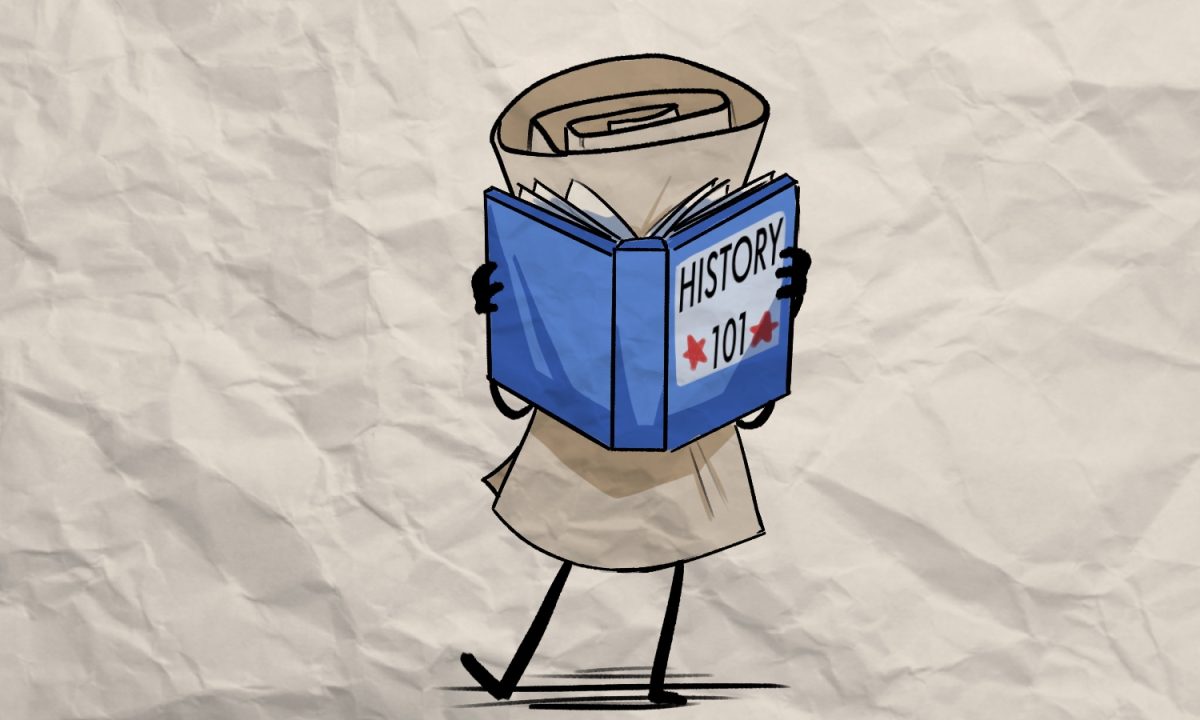
Editor’s Note: All opinion section content reflects the views of the individual author only and does not represent a stance taken by The Collegian or its editorial board.
My friends often tease me for the socks that I wear. Several pairs are many years old, and lots of them have holes in the heels. My friends call me lazy for not buying new socks, but I’m really just trying to make them last as long as possible.
I’m not trying to urge my fellow Rams to walk around with holes in their socks, but I do think that reusing as much as possible (whether it’s clothes, containers or anything else) can break the wasteful cycle of our society and save us money down the line.
I started with the example of my socks because textiles such as clothing, towels, sheets and other fabrics often wind up utterly wasted in landfills. According to the Environmental Protection Agency, “Landfills received 11.3 million tons of (municipal solid waste) textiles in 2018.” Some of those textiles can stay in the environment longer than natural fibers like cotton and wool. Holey socks and old towels, however, are just a fraction of the problem.

National Geographic gives a compelling “X-ray of the global economy” in this graph from its March 2020 issue. The graph uses arrows of differing sizes to show all of the materials put into the global economy in 2015 as well as the products produced from those materials. One thin arrow that loops around from output back to input is labeled “reused resources.” It accounted for less than 10 percent of the global input in 2015.
Meanwhile, two-thirds or 67.4 billion tons of global material was “dispersed into the environment as unrecoverable waste.” This demonstrates how little of modern life gets repurposed, and it highlights the unsustainable logic on which the global economy operates.
This is why students at Colorado State University should reuse as much as possible. We should recall our status as a three-time platinum-rated sustainable institution and take that distinction seriously in our daily lives.
The first step, of course, is reducing our impact on the natural world in any way that we can. After that, though, we need to become uncomfortable with throwing things in the trash. Before we put anything into a garbage can — or even a recycling bin — we should ask ourselves, “Is there absolutely nowhere else for this to go?”
To bring this back to my socks, we can start by using our stuff for as long as possible. My ability to walk is not impaired just because my socks are starting to give out, so I wear them for as long as I can. We buy blue jeans with holes in them from the start anyway, so should there really be a problem with wearing the rest of our wardrobe until that point?
The bottom line is that our world is a waste machine, and we have the power to not be so wasteful.”
But if you absolutely cannot bear to wear clothes that are giving out, then learning to sew can help you reuse garments. I’ll be asking for a small sewing kit for Christmas this year for that reason. When you repair your socks or your pants instead of throwing them away, you don’t need to buy new ones.
If and when you do need new clothes — let’s face it, I will need new socks eventually — buying from thrift stores can save you money and minimize your impact on the natural world. On the other hand, donating your old clothes to thrift stores can keep your stuff out of landfills and maybe even help someone who can’t afford to buy new clothes.
Other textiles like towels or bedding can be repurposed too. Your bathroom towel with a big hole in it just became four brand-new kitchen rags. That pillowcase with stains nobody should ask about can be part of next year’s scary Halloween costume or a sack to keep random junk in.
Reusing our potential trash can also exercise our creative impulses. Before throwing anything away, we should ask ourselves, “What would fit in here, or what can I do with this?” Libby Baker from One Green Planet has lots of extremely useful ideas for repurposing old household items. Her advice to save old toothbrushes for scrubbing dirty nooks and crannies has changed my life.
The possibilities are endless. One of my buddies turned an old milk carton into a small flower pot that he still uses. My mom reuses the to-go tubs from some restaurants to store her leftovers. I fold and reuse most of the aluminum foil that I wrap my lunches in since the foil doesn’t get dirty. Those plastic bags you use to buy produce at the grocery store can be repurposed more than once into small trash bags.
Here’s a crazy idea: Wash and reuse your zip-close bags. Some of those bags are sturdy enough to hold more than just food. Rinsing them out with soap and water can make them as good as new. I can’t remember the last time my roommates or I bought a box of zip-close bags.
The bottom line is that our world is a waste machine, and we have the power to not be so wasteful. Reusing everything that we can is an affordable way to remove our contributions to the economy of waste, and it can spark unique ingenuity in our homes and daily lives.
Cody Cooke can be reached at letters@collegian.com or on Twitter @CodyCooke17.









